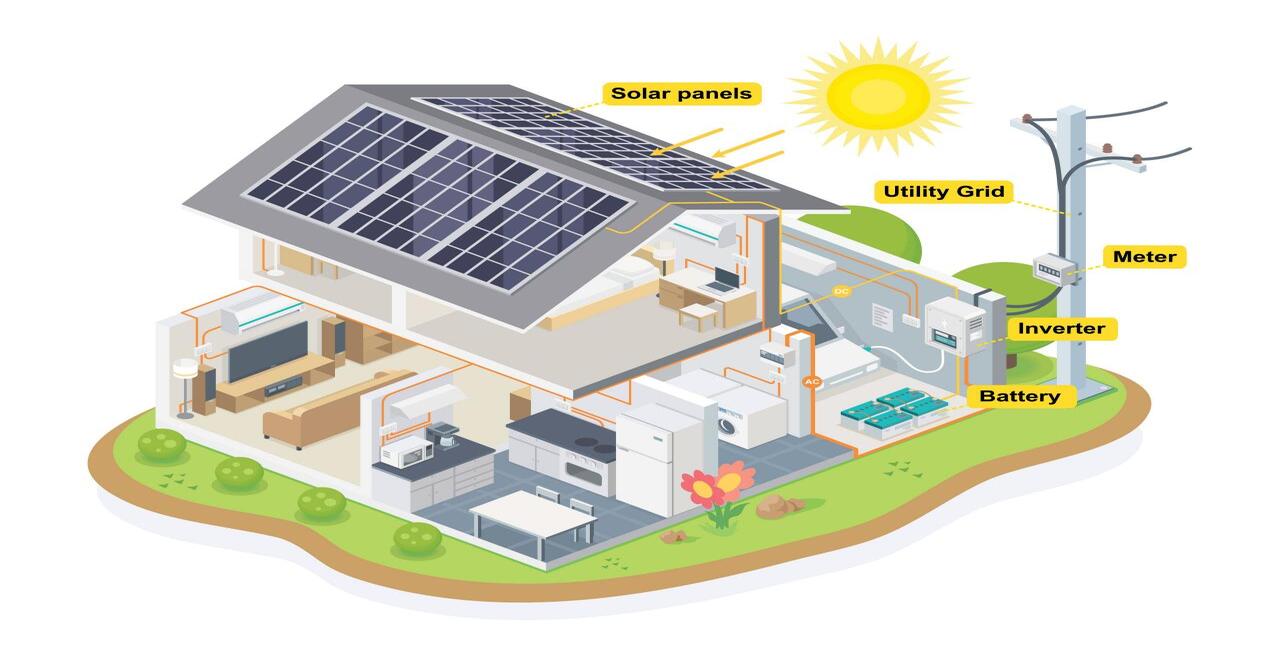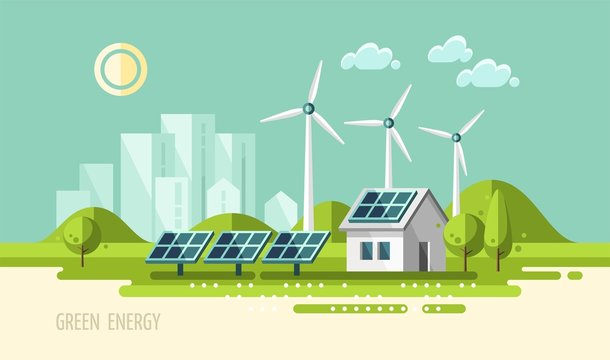Introduction:
In the face of climate change and growing environmental concerns, the construction industry is undergoing a paradigm shift towards sustainable practices. One crucial aspect of this shift is the integration of renewable energy sources into building design. By harnessing clean, renewable energy within the built environment, we can reduce carbon emissions, decrease reliance on fossil fuels, and create more resilient and efficient buildings. This blog explores the various ways in which renewable energy technologies can be seamlessly integrated into building design to promote sustainability and energy independence.
Understanding Renewable Energy Integration:
Renewable energy integration in building design involves the incorporation of technologies that generate clean energy from natural resources such as sunlight, wind, water, and biomass. These technologies can be integrated into both new construction projects and existing buildings through innovative design strategies and retrofitting techniques. The goal is to maximize energy efficiency, minimize environmental impact, and enhance the overall performance and comfort of the built environment.
Key Technologies for Renewable Energy Integration:
1. Solar Photovoltaic (PV) Systems: Solar PV systems convert sunlight into electricity using photovoltaic cells. They can be installed on building rooftops, facades, or as standalone structures such as solar carports or awnings. Solar PV systems can generate onsite renewable energy to power lighting, appliances, heating, cooling, and other electrical loads within the building.
2. Solar Thermal Systems: Solar thermal systems utilize sunlight to heat water or air for domestic hot water production, space heating, or process heating. These systems typically consist of solar collectors installed on rooftops or facades, connected to storage tanks or heat exchangers within the building.
3. Wind Turbines: Small-scale wind turbines can be installed on building rooftops or in adjacent open spaces to harness wind energy and generate electricity. Vertical-axis and horizontal-axis wind turbines are available in various sizes and configurations to suit different building types and wind conditions.
4. Geothermal Heat Pumps: Geothermal heat pumps utilize the stable temperature of the earth below the surface to provide heating, cooling, and hot water for buildings. Ground-source heat pumps circulate a fluid through underground pipes to transfer heat to or from the ground, depending on the season, providing efficient and renewable energy for space conditioning.
5. Biomass Heating Systems: Biomass heating systems use organic materials such as wood pellets, wood chips, or agricultural residues to generate heat for space heating or water heating. Biomass boilers or stoves can be integrated into buildings to provide renewable and carbon-neutral energy for heating purposes.
Benefits of Renewable Energy Integration in Building Design:
1. Reduced Carbon Footprint: By generating clean energy onsite, buildings can significantly reduce their carbon emissions associated with electricity consumption, heating, and cooling, contributing to global efforts to mitigate climate change.
2. Energy Cost Savings: Renewable energy integration can help buildings lower their energy bills by offsetting grid electricity or fossil fuel usage with free and abundant renewable resources such as sunlight and wind.
3. Energy Independence: Onsite renewable energy generation provides buildings with greater energy independence and resilience against grid disruptions or energy price fluctuations, enhancing overall energy security
4. Improved Indoor Comfort: Renewable energy technologies such as solar shading devices and natural ventilation systems can enhance indoor comfort by reducing solar heat gain, controlling glare, and improving air quality without relying on mechanical cooling systems.
5. Enhanced Property Value: Buildings equipped with renewable energy systems often command higher property values and attract environmentally conscious tenants or buyers seeking sustainable and energy-efficient living or working spaces.
Case Studies:
1. The Edge, Amsterdam, Netherlands: The Edge is a pioneering example of a sustainable office building that integrates renewable energy technologies such as solar PV panels, solar thermal collectors, and geothermal heat pumps. It has achieved net-zero energy consumption and serves as a model for energy-efficient and environmentally friendly commercial developments.
2. Bullitt Centre, Seattle, USA: The Bullitt Centre is a six-story office building that showcases high-performance green building design and renewable energy integration. It features a large array of solar PV panels on its roof, along with other energy-saving measures such as efficient lighting, passive heating and cooling, and rainwater harvesting.
Challenges and Considerations:
While renewable energy integration offers numerous benefits for buildings and the environment, it also presents challenges such as high upfront costs, technical complexities, regulatory hurdles, and site-specific constraints. Designers, developers, and building owners must carefully evaluate the feasibility, performance, and economic viability of renewable energy solutions to ensure successful implementation.
Conclusion:
The integration of renewable energy in building design represents a transformative approach to sustainable development, offering a pathway towards a greener, cleaner, and more resilient built environment. By harnessing the power of renewable resources such as sunlight, wind, and geothermal heat, buildings can reduce their environmental impact, enhance energy efficiency, and provide healthier and more comfortable indoor environments for occupants. As the demand for sustainable buildings continues to grow, renewable energy integration will play a pivotal role in shaping the future of architecture and construction, paving the





